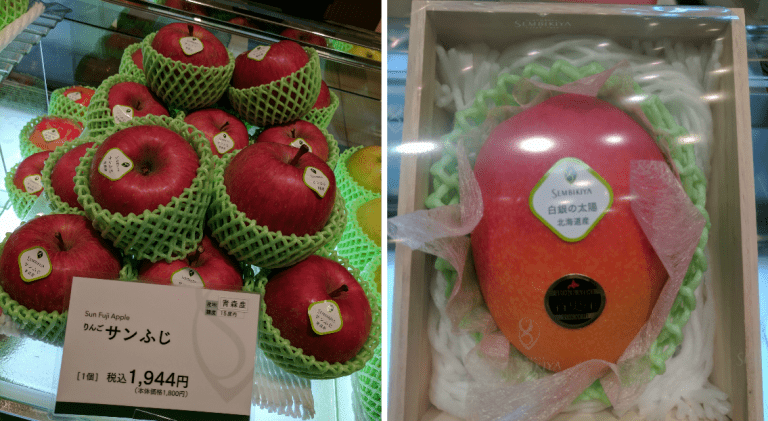Sembikiya: Inside the Japanese Luxury Fruit Market
Author: Nikki Kasal
The typical American fruit-shopping experience--if such a concept even exists--is more often than not defined by flickering fluorescent lighting and haphazard bins of lumpy watermelons and waxy, artificial-looking apples. Naturally, some types of fruit are more expensive than others, but even the higher price points don’t go much further than $5.99 or so for a pint of organic strawberries. Even then, one would have to carefully examine every corner of their purchase or risk the dismay of encountering that bunch of moldy strawberries hidden at the bottom of the container.
Not so at Semikiya, Japan’s largest and oldest provider of luxury fruit. Founded in 1834 by the samurai Benzo Ohshima, Sembikiya has been transformed by Ohshima’s descendants into a store specializing in the sale of the finest and most expensive produce the country has to offer. Luxury fruit is a market which is virtually unknown in the USA, yet it has managed to gain a significant foothold in Japan’s gift-giving culture.
https://slate.com/news-and-politics/2017/03/japans-high-end-fruit-market-elevates-produce-to-works-of-art.html
At Sembikiya, prices start high and only get higher. On the low end, you can find Sun Fuji apples for $17USD each and persimmons for $10 each. A bunch of a dozen grapes can go for around $65, while a single mango--grown in Hokkaido and incredibly rare-- may sell for as high as $237.
Image from: https://nextshark.com/sembikiya-fruit-parlor-tokyo-japan/
However, the crown jewel of Sembikiya are their signature muskmelons. The closest Americans can find to this kind of fruit are cantaloupes, yet the scratched and lumpy melons you might find at Jewel-Osco are a far cry from the pampered fruits at this store. Each melon is grown on its own plant, as the others are pruned early so all the plant’s nutrients can be delivered to the single fruit. They’re grown in greenhouses with air conditioners and heaters, wear little rubber ‘hats’ to protect their skin from sunburn, and are even given “melon massages” by farmers in an effort to make them sweeter. All of this results in perfectly round, lacy melons with an incredibly sweet, melt-in-the-mouth flavor. The price reflects the effort: cheaper specimens go for around $125 each, but a pair of the finest specimens fetched nearly $28,000 at a 2016 auction.
So why are people willing to pay so much for what is admittedly very good fruit, but a piece of fruit nonetheless? Interestingly, Sembikiya reports that around 80% of their customers are actually shopping for gifts for others, especially during customary Japanese gift-giving seasons in July and December. During these times, the store can sell up to 200 muskmelons a day, which are distributed to bosses, teachers, or family to show gratitude or repay indebtedness. A gift of oranges could be the ideal choice for a parent who particularly favors the fruit, while a more lavish presentation of high-end muskmelon could impress a client. Whatever the goal, Sembikiya’s wide array of offerings are sure to satisfy.
Image from: https://roadsandkingdoms.com/travel-guide/tokyo/why-should-a-melon-cost-as-much-as-a-car/
In a country where fruits and vegetables are treated as little more than essentials in a healthy diet, it can be difficult to understand why some people are willing to shell out thousands of dollars for a particularly sweet melon or mango. However, at Sembikiya, fruit takes on another meaning altogether, becoming something closer to art in both its cultural significance and aesthetic presentation. So while a trip to the grocery store may not exactly be on the top of everyone’s sightseeing list while in a foreign country, it might be worth it to make an exception for Sembikiya.






